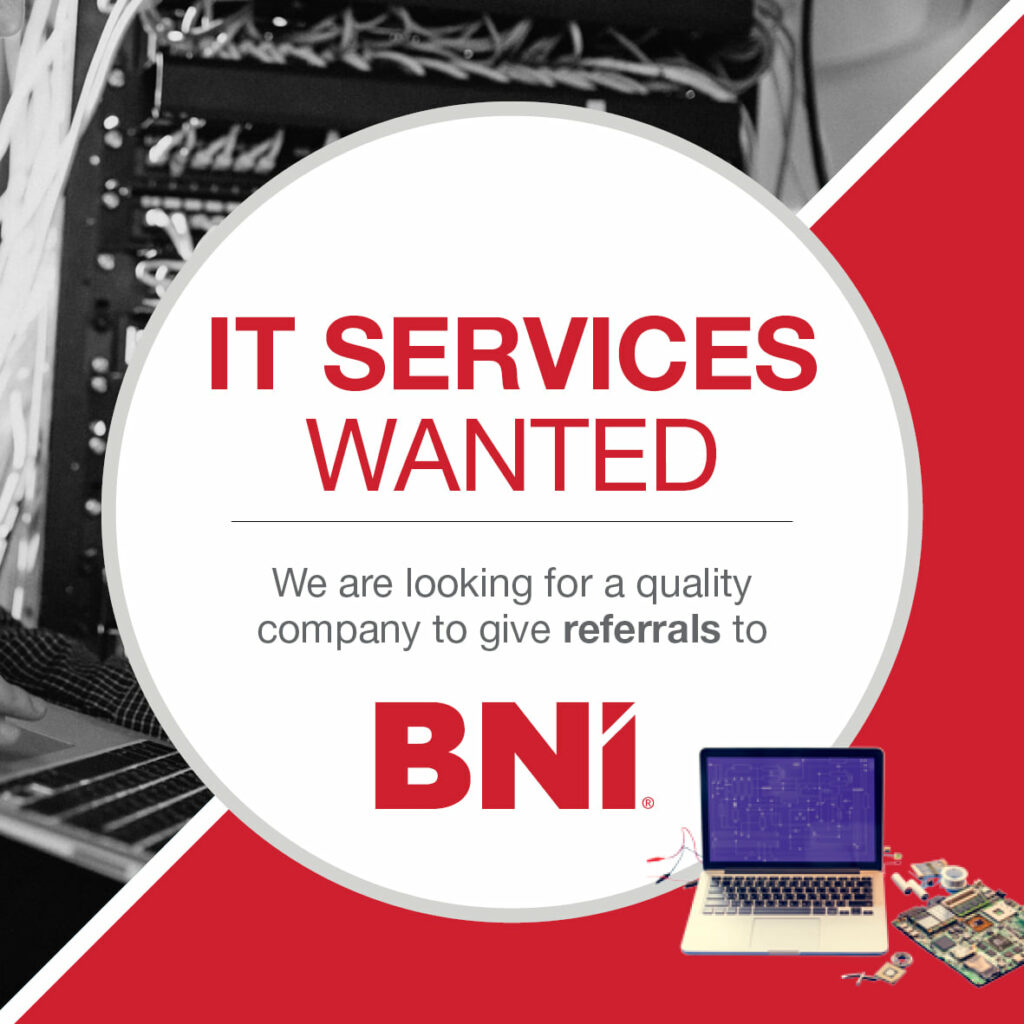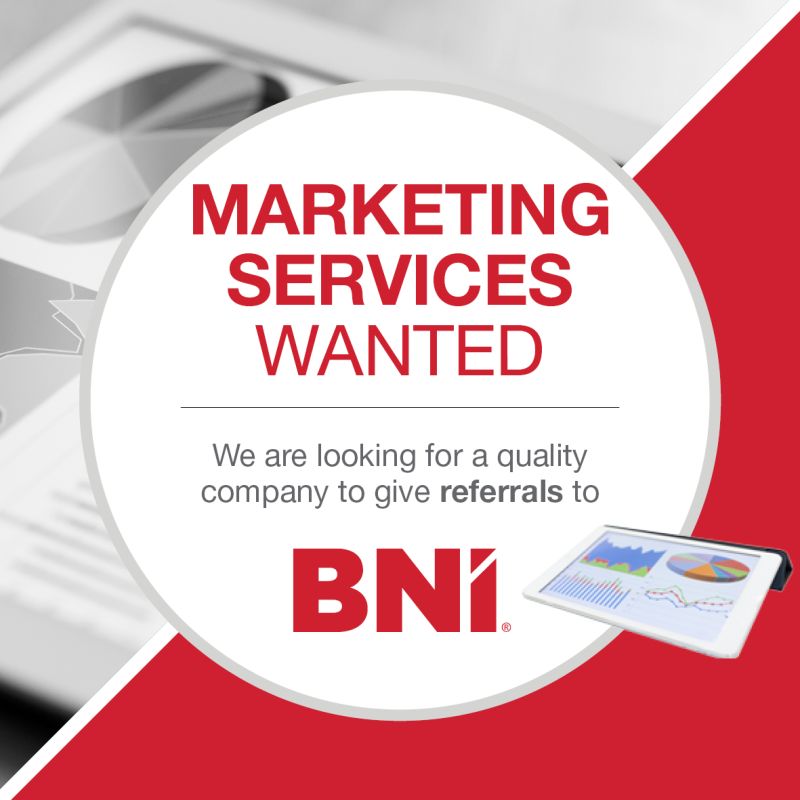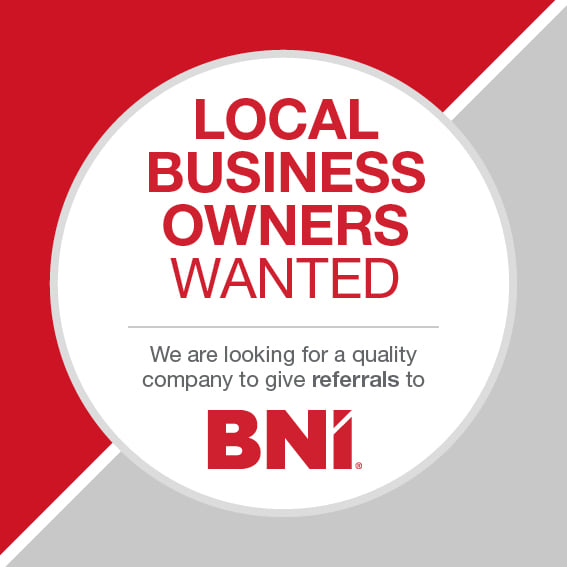
When it comes to online advertising, Google Ads often steal the spotlight. However, overlooking Bing Ads could mean missing out on a valuable advertising opportunity. In this blog, we will delve into the question of whether Bing Ads are worth it for your business. We'll explore their unique advantages, potential audience reach, and how they can complement your overall advertising strategy.
Bing Ads, now known as Microsoft Advertising, is a pay-per-click (PPC) advertising platform that allows businesses to display ads on the Bing search engine and its partner networks, including Yahoo and AOL. While Google dominates the search engine market share, Bing still holds a significant portion, making it a viable platform to consider for advertising campaigns.
Although Bing's search engine market share is lower than Google's, it still accounts for a significant portion of search queries. In some countries, such as the United States, Bing holds around 30% of the search engine market share. This means that millions of users actively use Bing to search for products, services, and information. By leveraging Bing Ads, you can tap into this audience and potentially reach a market segment that may be less saturated with competitors.
Rather than viewing Bing Ads as a competitor to Google Ads, consider it as a complementary platform that can enhance your overall advertising strategy. By diversifying your advertising channels, you can expand your brand's visibility, target different demographics, and maximise your reach across multiple search engines.
To make the most of Bing Ads, consider the following strategies:
While Bing Ads may not receive as much attention as Google Ads, they offer unique advantages and potential benefits for businesses willing to explore this alternative advertising platform. By considering Bing Ads as part of your advertising strategy, you can expand your reach, reach targeted demographics, and potentially achieve a higher return on investment.
ISO 9001 is a globally recognised standard for quality management systems (QMS). It provides organisations with a framework to consistently deliver high-quality products and services while meeting customer and regulatory requirements. In this blog, we will delve into the key aspects of ISO 9001, its benefits, and how it can enhance your business operations.
ISO 9001 is developed and maintained by the International Organization for Standardization (ISO), an independent international body composed of representatives from various national standards organisations. It is applicable to organisations of all sizes and industries, from manufacturing to service providers.
At its core, ISO 9001 focuses on establishing and maintaining a robust quality management system that emphasises continuous improvement, customer satisfaction, and adherence to legal and regulatory requirements. It outlines a set of requirements that organisations must meet to achieve certification.
ISO 9001 is based on a set of eight fundamental quality management principles. These principles serve as guiding concepts for organisations to implement effective quality management practices. They include:
Implementing ISO 9001 brings numerous advantages to organisations. Some key benefits include:
Implementing ISO 9001 requires a systematic approach. The process typically involves the following steps:
ISO 9001 is a powerful tool for organisations seeking to establish a robust quality management system. By adopting ISO 9001 principles and practices, businesses can enhance customer satisfaction, improve operational efficiency, and drive long-term success in today's competitive landscape.
Incorporating ISO 9001 into your business operations can provide a solid foundation for quality management, setting your organization apart from the competition and positioning it for growth. Embrace the principles of ISO 9001 and embark on a journey toward excellence in quality management.
Remember, understanding and implementing ISO 9001 is just the beginning. Continual improvement is the key to sustaining high-quality standards and adapting to evolving customer needs. Start your ISO 9001 journey today and reap the benefits of a robust quality management system.
Effective fleet management is essential for organisations across various industries. Whether you're a delivery service, a transportation company, or managing a field service team, the efficient coordination of your fleet can significantly impact your operational efficiency and customer satisfaction.
Salesforce, a leading customer relationship management (CRM) platform, offers a range of powerful tools and solutions to streamline fleet management processes. In this blog post, we will explore different options available for Salesforce Fleet Management and how they can enhance your business operations.
Salesforce Field Service Lightning (FSL) is a robust solution designed to optimize field operations, including fleet management. FSL enables efficient scheduling and dispatching of resources, such as vehicles and drivers, based on real-time data, customer preferences, and business rules.
It provides a unified view of your fleet, allowing you to monitor vehicle locations, track service appointments, and manage service requests seamlessly. FSL's intelligent routing capabilities help optimize routes, reducing fuel costs and improving overall fleet productivity.
Salesforce Maps is a powerful geolocation solution that integrates with Salesforce CRM to provide advanced mapping and route optimization functionalities. With Salesforce Maps, you can visualize your fleet's location in real-time, track vehicle movements, and monitor key performance indicators (KPIs).
The solution offers intelligent routing algorithms to optimize routes based on factors such as traffic conditions, delivery priorities, and driver availability. By leveraging geospatial data, Salesforce Maps empowers businesses to make data-driven decisions and improve fleet efficiency.
Salesforce offers seamless integration capabilities with Internet of Things (IoT) devices, allowing you to connect your fleet's vehicles and assets to the CRM platform.
By collecting and analyzing data from sensors and IoT devices, you can gain valuable insights into vehicle performance, fuel consumption, maintenance requirements, and driver behavior.
Integrating IoT data with Salesforce's CRM capabilities enables proactive fleet management, predictive maintenance, and the ability to optimize resource allocation based on real-time data.
Mobile apps play a vital role in fleet management, enabling drivers and field technicians to stay connected and access important information while on the go. Salesforce provides mobile app development tools and frameworks, such as Salesforce Mobile SDK, to build customized applications tailored to your fleet management needs.
These apps can provide drivers with real-time updates on their schedules, job details, navigation assistance, and allow them to capture digital signatures or submit service reports. Seamless integration with Salesforce CRM ensures that all data is synchronized and accessible from any device.
Salesforce's open architecture allows for easy integration with third-party fleet management solutions, providing organizations with even more options to enhance their fleet operations.
You can integrate telematics systems, fuel management software, maintenance management tools, and other specialized fleet solutions to leverage their features while leveraging the power of Salesforce CRM.
This integration enables centralized data management and streamlines workflows across various fleet management systems, improving operational visibility and efficiency.
Efficient fleet management is crucial for businesses relying on transportation and field operations. Salesforce offers a range of solutions and integration options to optimize fleet management processes, increase productivity, and enhance customer satisfaction.
By leveraging Salesforce Field Service Lightning, Salesforce Maps, IoT integration, mobile applications, and third-party integrations, organizations can achieve real-time visibility into their fleet, streamline operations, and make data-driven decisions.
Embracing Salesforce Fleet Management options empowers businesses to deliver exceptional service, maximize resource utilization, and stay ahead in today's competitive marketplace.
Please find a list of all BNI social media posting templates for as many categories as we could source.



















In today's competitive business landscape, effectively managing your sales process and maximizing revenue generation is crucial for sustainable growth. HubSpot, a leading customer relationship management (CRM) platform, offers a comprehensive suite of tools and features designed to help businesses drive sales and achieve their revenue goals.
In this blog post, we will explore how you can leverage HubSpot to increase sales and enhance your overall sales performance.
The first step towards utilising HubSpot for sales success is to set up and implement the HubSpot CRM. This powerful tool allows you to manage your sales pipeline, track customer interactions, and gain valuable insights into your prospects' behaviors. We'll discuss how to import contacts, customize deal stages, and set up email integration to streamline your sales process.
HubSpot provides various features to generate and manage leads effectively. We'll delve into strategies for creating compelling landing pages and forms to capture leads and show you how to automate lead nurturing campaigns through email workflows. Additionally, we'll explore how to score leads based on their engagement and prioritize them for your sales team's attention.
Email remains a critical tool for sales professionals, and HubSpot enables you to automate and personalize your email outreach. Discover how to create email templates, set up sequences for automated follow-ups, and use personalization tokens to tailor your messages to individual leads. We'll also share best practices for increasing email open rates and maximizing response rates.
To make data-driven decisions and continually improve your sales efforts, you need access to accurate and insightful analytics. We'll guide you through setting up sales dashboards in HubSpot to track key metrics such as deal velocity, win rates, and revenue generated. We'll also discuss how to leverage these reports to identify areas of improvement and optimize your sales strategy.
HubSpot Sales Hub offers advanced features to empower your sales team and enable them to work more efficiently. We'll explore tools like email tracking and document management to gain valuable insights into prospect engagement. Moreover, we'll discuss how to leverage the HubSpot Sales Hub to automate tasks, schedule meetings, and collaborate effectively within your team.
HubSpot integrates seamlessly with various other tools and platforms, allowing you to create a customized sales ecosystem. We'll discuss popular integrations, such as HubSpot and LinkedIn Sales Navigator, as well as explore how to leverage custom objects and workflows to tailor HubSpot to your specific sales process.
HubSpot offers a robust set of features designed to enhance your sales efforts and drive revenue growth. By implementing the strategies outlined in this comprehensive guide, you can harness the power of HubSpot to streamline your sales process, improve lead generation and management, automate email outreach, and leverage data analytics to optimize your sales strategy.
Embrace the potential of HubSpot, and unlock new possibilities for increasing sales and achieving sustainable business growth.
Remember, HubSpot is a versatile platform, and the key to success lies in continuously exploring and leveraging its features to align with your sales goals and customer needs. So, get ready to elevate your sales game with HubSpot!
In the ever-evolving world of marketing, businesses are constantly seeking ways to optimize their advertising strategies and drive maximum returns on their investments.
One essential metric that plays a pivotal role in evaluating the effectiveness of marketing campaigns is ROAS, or Return on Advertising Spend. ROAS provides valuable insights into the revenue generated by advertising efforts and helps businesses make data-driven decisions to enhance their marketing performance.
In this blog post, we will delve into the concept of ROAS, its significance, calculation methods, and effective strategies for maximizing ROAS.
ROAS, or Return on Advertising Spend, is a metric used to measure the revenue generated for every pound spent on advertising. It quantifies the effectiveness of marketing campaigns by evaluating the return on the investment made in advertisements across various channels.
ROAS enables businesses to assess the profitability of their advertising efforts and make informed decisions regarding budget allocation and campaign optimization.
The formula for calculating ROAS is relatively straightforward:
ROAS = Revenue Generated from Advertising / Advertising Spend
To illustrate this with an example, let's say a business invests £10,000 in a digital advertising campaign and generates £50,000 in revenue as a result. The ROAS for this campaign would be 5 (£50,000 / £10,000), meaning that for every pound spent on advertising, the business earned £5 in revenue.
ROAS provides several key benefits to marketers and businesses alike:
Measuring Advertising Effectiveness: ROAS helps marketers evaluate the effectiveness of their advertising campaigns by quantifying the revenue generated in relation to the amount spent. It enables them to identify high-performing channels, campaigns, or keywords, as well as areas that require optimization.
Optimizing Budget Allocation: By assessing the ROAS of different advertising channels or campaigns, marketers can allocate their budgets more effectively. They can identify underperforming channels and reallocate funds to those that yield higher returns, maximizing the overall impact of their advertising spend.
Informing Campaign Optimization: ROAS serves as a performance indicator for marketing campaigns, enabling businesses to refine their strategies. By analyzing the factors contributing to high ROAS, such as targeting, messaging, or creative elements, marketers can optimize their campaigns for better results.
To enhance ROAS and improve marketing effectiveness, consider implementing the following strategies:
ROAS is a critical metric in marketing that allows businesses to measure the effectiveness of their advertising investments.
By calculating the revenue generated for each dollar spent, marketers can make informed decisions about budget allocation, campaign optimization, and overall marketing strategies.
By implementing targeted advertising, conversion tracking, A/B testing, and continuous optimization, businesses can maximize their ROAS and achieve greater success in their marketing efforts.
Embracing these strategies will not only help businesses drive higher returns on their advertising spend but also enhance their overall marketing performance and contribute to long-term business growth.
In the world of Salesforce, triggers play a vital role in automating and customizing business processes. A trigger is a piece of Apex code that executes before or after specific database operations occur, such as the insertion, updating, or deletion of records.
Triggers allow you to define custom logic and actions to be performed when certain events or conditions are met within the Salesforce platform. In this blog post, we'll explore the concept of triggers in Salesforce, their purpose, and how they can enhance your Salesforce implementation.
Triggers are primarily used to extend the functionality of standard Salesforce objects or to build custom logic around these objects. They provide a way to respond to changes in data and perform additional actions, such as updating related records, sending notifications, or triggering workflows.
By leveraging triggers, businesses can enforce complex business rules, automate repetitive tasks, maintain data integrity, and create personalized user experiences. Triggers offer a powerful toolset for tailoring Salesforce to your specific business requirements and workflows.
When a database operation occurs on a Salesforce object, triggers are invoked and executed within a specific context. There are two types of trigger contexts:
Understanding the execution context is crucial, as it determines what actions can be performed within the trigger and the order in which multiple triggers are executed.
Triggers in Salesforce can be associated with specific events or database operations, which include:
Additionally, triggers can be further refined by defining specific conditions or criteria that must be met for the trigger to execute. This allows for granular control over when the trigger logic is applied.
Implementing triggers in Salesforce offers several benefits to organizations:
While triggers offer powerful functionality, it's essential to consider some best practices to ensure optimal performance and maintainable code:
Triggers are a fundamental aspect of Salesforce customization and automation. They provide a powerful mechanism to extend the platform's functionality and tailor it to specific business requirements. By leveraging triggers, organizations can automate tasks, enforce business rules, maintain data integrity, and create personalized user experiences.
However, it's important to approach trigger development with best practices in mind, such as bulkification, adhering to governor limits, code separation, testing, and documentation. By following these guidelines, businesses can ensure the efficient and maintainable implementation of triggers within their Salesforce org.
When used effectively and responsibly, triggers can significantly enhance the capabilities of Salesforce, streamline business processes, and empower users to work more efficiently, ultimately driving business success.
In today's digital landscape, online advertising is a crucial component of any successful marketing strategy. With numerous platforms available, Google Ads stands out as one of the most popular and widely used advertising platforms.
Formerly known as Google AdWords, Google Ads allows businesses to reach their target audience through targeted ads displayed on Google search results, partner websites, and other Google-owned platforms.
But the question remains: Is Google Ads worth it for my business?
In this blog post, we will explore the potential benefits and considerations to help you make an informed decision.
One of the primary advantages of Google Ads is its massive reach. Google is the most widely used search engine, processing billions of searches every day. By utilising Google Ads, your business can tap into this vast pool of potential customers actively searching for products or services similar to yours.
Additionally, Google Ads provides extensive targeting capabilities, allowing you to narrow down your audience based on factors such as keywords, demographics, location, and even device type.
This level of targeting precision ensures that your ads are displayed to the most relevant audience, increasing the chances of generating qualified leads and conversions.
Google Ads offers a flexible budgeting system that allows businesses of all sizes to participate. You have control over how much you spend on your ads, and you only pay when someone clicks on your ad (pay-per-click) or when your ad is displayed a certain number of times (impressions).
This pay-per-click model ensures that you're only paying for actual engagement with your ads, making it a cost-effective advertising option.
Moreover, Google Ads provides detailed analytics and tracking tools, allowing you to measure the performance of your ads and optimise your budget accordingly.
You can identify which keywords, ads, and campaigns are driving the most conversions, enabling you to allocate your budget effectively for maximum ROI.
Unlike other forms of advertising that may take time to yield results, Google Ads can deliver almost immediate visibility and traffic to your website. Once your ads are approved, they can start appearing in search results within minutes.
This instant visibility can be highly beneficial, especially for businesses looking to promote a new product, service, or limited-time offer.
Furthermore, Google Ads provides comprehensive tracking and reporting features that enable you to measure the effectiveness of your campaigns in real-time. You can track metrics such as clicks, impressions, conversions, and cost per acquisition.
This data-driven approach allows you to make data-backed decisions, optimise your campaigns, and continuously improve your advertising efforts.
Appearing at the top of search results through Google Ads not only increases your visibility but also enhances your brand's authority and credibility. When users see your business listed prominently in search results, they are more likely to perceive your brand as trustworthy and reliable.
Moreover, Google Ads offers various ad extensions that allow you to provide additional information, such as phone numbers, addresses, and links to specific landing pages. These extensions enhance your ad's visibility and provide users with convenient ways to engage with your business directly.
Managing Google Ads campaigns requires a certain level of expertise and ongoing optimisation. While Google Ads offers significant benefits, it's essential to consider the potential challenges and factors that may impact its effectiveness for your business.
As Google Ads is a widely used platform, competition for keywords and ad placements can be intense, especially in highly competitive industries. This competition can drive up the cost per click, making it more challenging to achieve a positive return on investment. Conducting thorough keyword research and developing a strategic bidding strategy are crucial to maximise the effectiveness of your Google Ads campaigns.
to ensure optimal performance. The platform can be complex, with various settings, targeting options, and ad formats to navigate. It may take time and effort to learn and master Google Ads, especially if you're new to online advertising. Consider whether you have the resources and expertise available in-house or if it's more practical to outsource to a digital marketing agency.
With the increasing use of ad blockers and the constant exposure to ads across various platforms, consumers can develop ad fatigue. This means they may become desensitised to ads or actively block them, reducing the effectiveness of your Google Ads campaigns. To combat ad fatigue, it's important to create compelling, relevant, and engaging ad content that stands out from the competition and resonates with your target audience.
While Google Ads can provide instant visibility, it's important to remember that it's a paid advertising channel. Depending solely on Google Ads for online visibility may overlook the long-term benefits of investing in organic search engine optimisation (SEO). A comprehensive digital marketing strategy should include a combination of paid advertising and organic SEO efforts to maximise online visibility and reach.
Deciding whether Google Ads is worth it for your business requires careful consideration of your marketing goals, target audience, budget, and resources. While Google Ads offers a powerful platform to reach your target audience, generate leads, and increase brand visibility, it's important to assess the potential challenges and ensure it aligns with your overall marketing strategy.
If you have a clear understanding of your target audience, the ability to allocate a reasonable budget, and the willingness to invest time and effort into optimising and managing your campaigns, Google Ads can be a highly effective advertising channel. It offers precise targeting, quick results, and the ability to measure and optimise your campaigns for maximum ROI.
However, if your target audience is not actively searching for your products or services on Google, or if you have budget constraints or limited resources, other advertising channels or marketing strategies may be more suitable for your business.
Ultimately, evaluating the potential benefits, challenges, and alignment with your business objectives will help you make an informed decision about whether Google Ads is worth it for your specific business.
In the fast-paced world of social media, platforms come and go, but one that has captured the attention of millions around the globe is TikTok. Originally launched in 2016, TikTok quickly rose to prominence, particularly among younger demographics, and has become a cultural phenomenon.
With its unique format of short videos set to music, TikTok has revolutionized the way people consume and create content. But the question remains: should your business be on TikTok? In this blog post, we'll explore the potential benefits and considerations to help you make an informed decision.
One of the main reasons businesses consider joining TikTok is its enormous user base and potential for viral content. TikTok boasts over 1 billion monthly active users, with a majority of them being in the younger age bracket. If your target audience aligns with the demographics prevalent on TikTok, you have a vast pool of potential customers to tap into.
TikTok's algorithm is designed to promote engaging and entertaining content, making it easier for businesses to gain traction. A well-crafted video can quickly gain thousands or even millions of views, increasing brand exposure and generating organic buzz. The potential for virality on TikTok is unmatched, making it an attractive platform for businesses looking to reach a wider audience.
TikTok thrives on creativity and authenticity, offering a unique opportunity for businesses to showcase their brand personality. The platform encourages users to be creative and think outside the box, which aligns well with the current trend of authentic marketing. By creating engaging and entertaining content, businesses can humanize their brand and connect with their audience on a more personal level.
From behind-the-scenes glimpses into your business operations to user-generated content campaigns, TikTok provides a platform for businesses to experiment and have fun with their marketing strategies. It allows you to break away from the traditional corporate image and engage with your audience in a more casual and relatable manner.
Another advantage of being on TikTok is the opportunity to collaborate with influencers. TikTok influencers have amassed massive followings and have a significant impact on consumer behavior. Partnering with relevant influencers can help you reach a wider audience and leverage their credibility to build trust and increase brand awareness.
Influencer marketing on TikTok can take various forms, from product endorsements and reviews to creative challenges and branded content. By tapping into the influencer's existing fan base, you can quickly gain exposure to a highly engaged and receptive audience. However, it's essential to choose influencers whose values align with your brand and target audience to ensure authenticity and relevance.
Being on TikTok allows businesses to stay relevant in a rapidly evolving digital landscape. By embracing emerging platforms, you demonstrate your willingness to adapt and connect with your audience on their preferred channels. Being an early adopter of TikTok can give your business a competitive advantage, especially if your competitors have yet to explore the platform fully.
Additionally, TikTok offers various advertising options to help businesses reach their target audience effectively. From in-feed ads to branded hashtag challenges, businesses can create highly targeted and engaging campaigns to drive traffic, increase conversions, and boost brand awareness.
While TikTok presents numerous opportunities, it's crucial to consider the potential challenges and whether they align with your business objectives.
Deciding whether your business should be on TikTok requires careful consideration of your target audience, resources, and marketing objectives. While the platform offers tremendous potential for reach, engagement, and creativity, it's important to evaluate if it aligns with your brand identity and marketing goals.
If your target audience primarily consists of younger demographics, you have the resources and creativity to invest in TikTok, and you're willing to stay consistent and adapt to the platform's dynamic nature, then TikTok can be a valuable addition to your social media marketing strategy.
However, if your target audience doesn't align with TikTok's user base, or if you have limited resources and time to dedicate to the platform, it may be more effective to focus on other social media platforms that better suit your business objectives.
Ultimately, the decision to be on TikTok should be based on a thorough understanding of your audience, resources, and goals, as well as an evaluation of the platform's potential benefits and challenges.
By carefully assessing these factors, you can determine if TikTok is the right fit for your business and make an informed decision about your social media presence.
Dashboards are an essential tool for businesses of all sizes. They provide an overview of the company's performance in real-time, allowing decision-makers to make informed decisions based on the data. With the advent of customer relationship management (CRM) systems like Salesforce, businesses can access a wealth of data about their customers and sales processes, making it easier to create meaningful dashboards that provide valuable insights.
In this blog post, we'll explore how dashboards from CRMs such as Salesforce help businesses make data-driven decisions. We'll also include a screenshot of a dashboard that shows real-time data to demonstrate the power of these tools.
Dashboards from CRMs such as Salesforce provide businesses with a centralized platform to monitor their sales and marketing activities. These dashboards are customizable and can be configured to show a wide range of metrics, including sales revenue, customer satisfaction, and lead conversion rates, among others.
Here are some ways dashboards from CRMs like Salesforce help:
To demonstrate the power of dashboards from CRMs like Salesforce, let's take a look at a real-time dashboard example. The screenshot below shows a Salesforce dashboard that provides insights into the sales activities of a fictional company called "XYZ Corp."

In this dashboard, we can see a variety of metrics, including the number of new leads generated, the number of deals closed, and the total sales revenue generated. We can also see how these metrics compare to previous periods, making it easy to identify trends and opportunities.
Dashboards from CRMs like Salesforce are a powerful tool that can help businesses make data-driven decisions. By providing real-time insights into sales and marketing activities, these dashboards can help businesses identify trends, opportunities, and potential issues that need to be addressed.
Customizable and user-friendly, these dashboards can be tailored to the specific needs of a business and shared with team members to improve collaboration. If your business is not already using dashboards from a CRM like Salesforce, now is the time to start.
In today's digital world, customer experience is everything, and live chat is a key component of that experience. Customers want quick and convenient support, and live chat is an effective way to provide that. It allows customers to get their questions answered and problems solved in real-time, without having to pick up the phone or send an email. In this blog, we'll look at the top 5 live chat solutions available to businesses today.
Zendesk Chat is one of the most popular live chat solutions on the market. It's known for its user-friendly interface and extensive feature set. With Zendesk Chat, you can customise the look and feel of the chat widget to match your website's branding. You can also set up automated chat triggers, which can prompt a chat window to appear when a visitor takes a specific action on your website.
One of the standout features of Zendesk Chat is its chatbots. You can use the built-in bot builder to create custom chatbots that can help answer common questions and provide support 24/7. If the chatbot can't answer a question, the customer will be connected to a live agent.
LiveChat is another popular live chat solution that's known for its ease of use and robust feature set. With LiveChat, you can customise the chat widget to match your website's branding, and you can set up chat triggers based on a visitor's behavior. For example, you can set up a trigger to prompt a chat window to appear when a visitor has been on a specific page for a certain amount of time.
One of the standout features of LiveChat is its chat tagging system. You can tag chats with specific labels to help you organise and analyse them later. This can be especially helpful if you're trying to identify common customer issues or track the performance of your support team.
Intercom is a comprehensive customer messaging platform that includes live chat, as well as email, social media, and in-app messaging. With Intercom, you can create personalised chat experiences for your customers based on their behavior and history with your company. For example, you can use Intercom to send targeted messages to customers who have abandoned their shopping carts or who haven't logged in to your app in a while.
One of the standout features of Intercom is its ability to integrate with other tools and platforms. For example, you can integrate Intercom with your CRM, marketing automation platform, or helpdesk software to create a seamless customer experience across all touchpoints.
Tawk.to is a free live chat solution that's designed for small and medium-sized businesses. Despite being free, Tawk.to offers a wide range of features, including real-time monitoring, chat history, and customisable chat widgets. You can also set up chat triggers to prompt a chat window to appear based on a visitor's behavior.
One of the standout features of Tawk.to is its ability to support multiple agents and departments. This makes it easy to route chats to the right agent or team based on the customer's needs.
Olark is a live chat solution that's designed to help businesses provide personalised support to their customers. With Olark, you can customise the look and feel of the chat widget, and you can set up chat triggers to prompt a chat window to appear based on a visitor's behavior. You can also use Olark to track visitor behavior and gather feedback through surveys.
One of the standout features of Olark is its reporting and analytics. You can use Olark's reporting tools to track chat volume, customer satisfaction, and agent performance. This can help you identify areas for improvement and optimise your support strategy over time.
Live chat is an essential tool for businesses looking to provide a seamless and efficient customer experience. There are a wide range of live chat solutions available on the market, each with their own unique features and capabilities. When choosing a live chat solution for your business, it's important to consider factors such as customisation options, chatbot capabilities, reporting and analytics, and integrations with other tools and platforms.
Zendesk Chat, LiveChat, Intercom, Tawk.to, and Olark are all excellent options for businesses looking to implement live chat. Whether you're a small start-up or a large enterprise, there's a live chat solution out there that can help you provide the level of support your customers expect. By leveraging the power of live chat, you can enhance your customer experience, increase customer loyalty, and ultimately drive business growth.